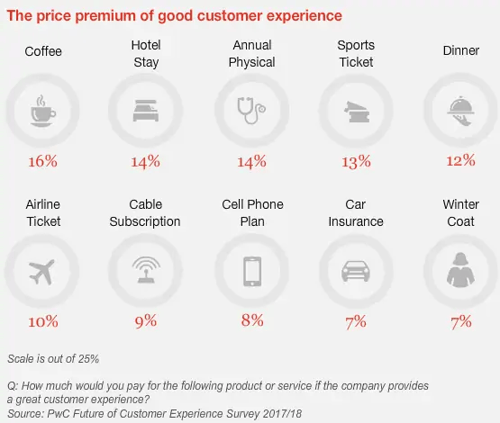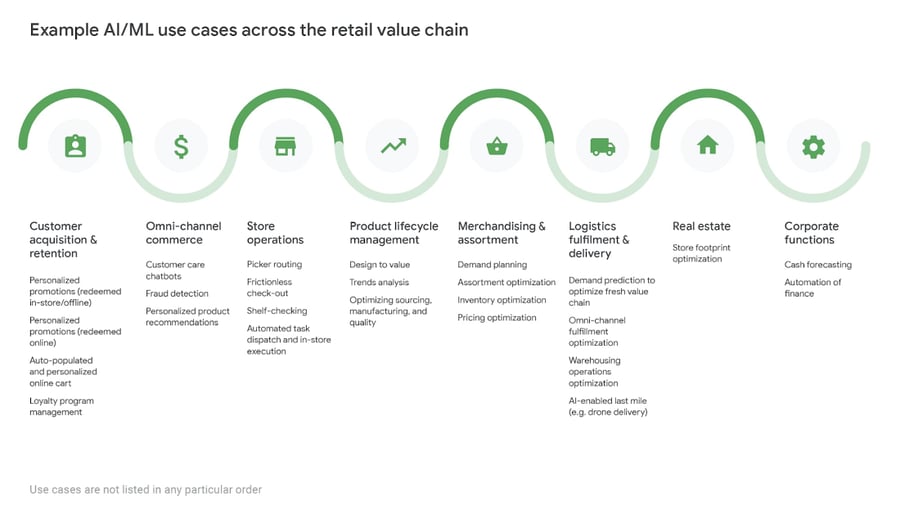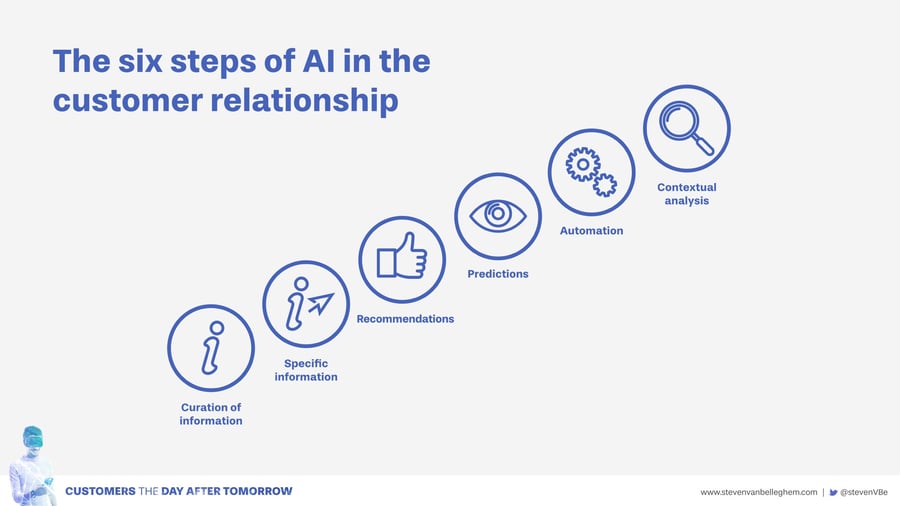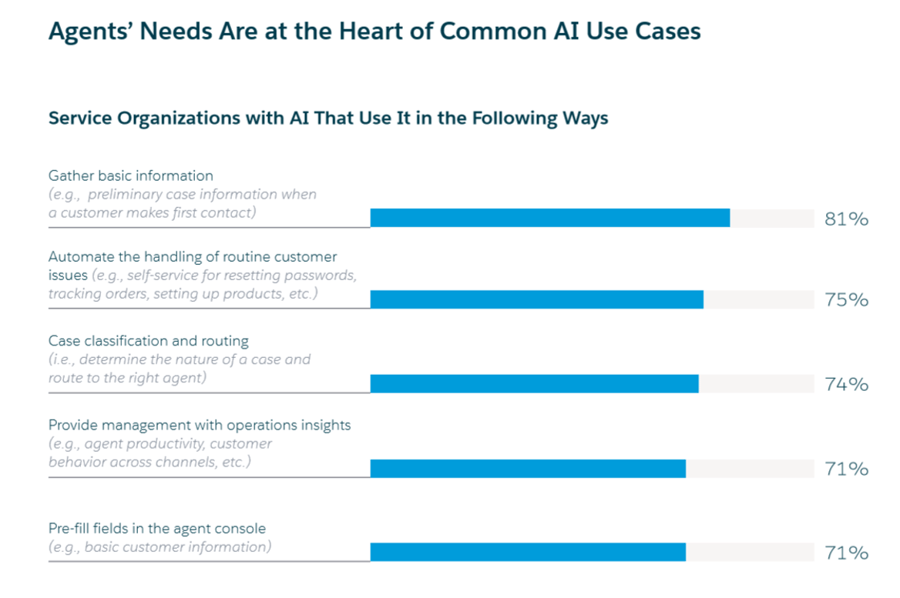
The automation revolution is already changing the face of business. From retail to manufacturing and from healthcare to finance, few sectors have been left untouched. With the arrival of artificial intelligence (AI) and machine learning, the possibilities for the years ahead are almost endless.
What you might not have realized is that you can also automate many customer service tasks. The progress of automation in customer service has perhaps been slower than in some other sectors. Retailers – both bricks-and-mortar and online outlets – have been wary of making use of the technology.
There have been fears, for instance, that automated customer service is inevitably inferior and that it may cause customers avoidable frustration – thus leading them to take their business elsewhere. However, what we’ve seen over the last few years is that customer service automation can help both consumers and businesses at the same time.
In this blog post, we’ll examine the ongoing transformation being brought about by customer service automation. We’ll take a closer look at how and why businesses are taking advantage of automation to drive up customer service standards before going on to list five key benefits of customer service AI automation.
Then, once we’ve covered that, we’ll list some brief points on how your business can go about automating customer service functions. By the end of it, you should have a clearer idea of just why automation is taking customer service by storm – and why your business should hop aboard the automation bandwagon.
How Businesses Are Embracing Customer Service Automation
In the modern-day retail environment, the customer is more powerful than ever. This is why it’s so important to get the customer experience right. If you aren’t constantly improving the user experience to offer customers a smooth and satisfying visit to your store or website, then there’s a very good chance your competitors will – and they’ll be the ones poaching your customers.
By contrast, if you can offer your customers the kind of experience they’ve come to expect, they’re much more likely to stick around – and they might even be prepared to pay more for the privilege. According to research from accounting firm PwC, 86% of consumers said they would pay more for a good customer experience.
In another survey, 84% of consumers polled said they considered the customer experience a critical factor in their purchasing decisions. An overwhelming majority of consumers report that customer service is an essential factor in determining their loyalty to particular brands.

Nevertheless, it seems consumers still have some reservations about automated customer service. According to the PwC survey mentioned above, 75% of respondents said they would prefer to interact with a human assistant rather than an automated one, even as artificial technology in retail continues to improve. So, there’s still some persuading to do.
And yet, the use of AI in retail – from the introduction of chatbots to the order fulfillment process – continues to increase. It’s estimated that the AI retail market as a whole was valued at $1.8bn in 2020 and is expected to grow to $10.9bn by 2026. This suggests quite clearly that retailers see real value in it.
5 Advantages of Customer Service Automation
From automated chatbots to RPA implementation, there are various ways automation is transforming the retail industry. Customer service automation is having quite radical effects without us necessarily noticing; the way we interact with our favorite brands has changed dramatically in recent years.
What are the main advantages of customer service automation? And is your business really built for hyperautomation? Let’s look at some of the key benefits as far as customer service is concerned.
1. Faster responses, happier customers
When you’re thinking about matters relating to customer service, it’s always best to put yourself in the customers’ shoes. Think about the bugbears that you yourself have found frustrating. It stands to reason that you should try to eliminate these to optimize the customer experience at your business as best you can.
One major customer issue is sluggish response times. Again, think of all those times you’ve found yourself waiting interminably on the end of a phone or at a customer service desk, hoping in vain that someone will come to your assistance. If this kept happening to you, you’d probably go elsewhere – and your customers are likely to do the same.
There are two primary ways in which businesses might go about addressing the problem of long wait times. Firstly, they might hire more agents – this is expensive, which is something we’ll come onto later. Alternatively, they can automate aspects of their customer service.
Using an AI-enabled chatbot alongside your eCommerce platform to answer frequent customer queries can prove indispensable. It can shorten response times significantly, thereby helping to keep clients content. It also allows customers to help themselves, resolving their own issues. This saves them the hassle of reaching out to your team for assistance and allows your team to focus on other tasks.
2. Lower costs
As anyone who’s run their own business will know, the financial pressures are seemingly never-ending. This is why so many companies are investing in AI and other technologies to help cut costs while at the same time improving service standards.
Customer service automation can help businesses drive up those service standards without having to invest in extra staff. While having the right staff remains critical, they’re expensive to recruit and train, and this process inevitably forces other team members to take time out of their own day. So it’s a good idea to look into alternatives where possible.
Automated customer service can take some of this strain, providing customers with the help and guidance they need while freeing up your human employees to do other things (which we’ll address next). Of course, there will still be issues and queries that need to be resolved in person. But customer service automation can substantially lighten the load.
There are other advantages as well. For a start, you don’t have to give your customer service tools, like unattended RPA bots, a raise every year, or a bonus when they meet specific targets. But, with the cash saved, you’ll have more money at your disposal to reward your human staff for all their hard work.
3. Lightening the load for your staff
It’s not just business owners who are constantly under pressure, with various competing demands for their attention. Employees, too, are often snowed under and have to juggle various tasks. So, if you can help lighten their load, this can help both employees and customers. Staff are less stressed, and customers get the help they need. It’s a win-win.
The bottom line here is that many customer queries simply don’t need to be handled by human employees. Many simple everyday queries can be dealt with in various other ways, including automated responses. More severe issues can be escalated and brought to the attention of staff through specific rules and triggers.

A multi-tier system can help you provide customer support through automated methods for the least serious and more straightforward queries while ensuring that more severe or complex problems are directed to human agents. This helps guarantee that questions are addressed with minimum delay and at the appropriate level of complexity.
So, although your customers will still have human staff on hand when they need them, not every query needs to be handled by a flesh-and-blood employee. By automating simpler queries, human staff have more time (and energy!) to take on other tasks. This makes life simpler for them, without inconveniencing your customers in any way.
4. More reliable customer service
Customer service automation allows you to provide a more responsive and reliable standard of service. While many customers are still somewhat wary of automated assistants, automation provides a more consistently reliable level of customer service.
This means that, even outside of regular opening hours, some form of assistance is always available. (Complex queries can always be picked up as soon as a human assistant is around.)
These days, consumers make purchases at all hours of the day – this is, of course, one of the primary benefits of online shopping. Automated 24/7 customer service can help provide customers with a helping hand, whatever the time of day. This should boost conversion rates, sales and revenue, and thus your overall bottom line.
5. Fewer human errors
Even the most experienced, accomplished, and attentive member of staff will make mistakes at times. None of us are infallible! Human error is, therefore, simply a fact of life and of doing business. But over time, these errors can mount up and cost companies substantial amounts of money.
Automating aspects of customer service can help to cut out some errors and thereby save your business cash. You might not have realized just how expensive these errors can be, but they can soon accumulate. It’s in your interest to take action to address them and minimize them.
It’s not hard to see how errors can occur. When busy employees carry out repetitive tasks and juggle multiple responsibilities, it's easy to make mistakes. Automation can reduce human error not just by taking some of those tasks out of human hands, but also by allowing staff to concentrate on their remaining work more closely.

How to Automate Your Customer Service
When automating customer service tasks, there are a few crucial points you need to consider. For a start, you must think carefully about which jobs are suitable for automation and which aren’t. Think about the most redundant and repetitive tasks; do human employees really need to be doing these?
You must also ensure that you’re making effective use of the data at your disposal. The better you understand your customer base, the more efficiently you’ll be able to automate customer service tasks. Customer relationship management (CRM) software can help you store relevant customer information, including past interactions and purchases.
Furthermore, when you introduce customer service automation tools, make sure you do so in a careful, piecemeal way. Use manual QA testing to iron out any bugs and flaws that might crop up. Don’t be afraid to ask customers for feedback; most are quite happy to provide it. This will help you address any shortcomings and improve automated service standards.

Conclusion
From machine learning to OCR automation, the automation revolution shows no signs of slowing down. The benefits of customer service automation to consumers and businesses are becoming ever more apparent. It works for customers – in helping them get queries addressed more promptly – and companies by lightening the load.
But, as we’ve noted, you must ensure that the tasks you automate are the right ones. You shouldn’t approach automation with the mindset that you can use it as a magic bullet, slashing costs and staff. Customer service automation should complement and streamline your existing provision of customer service, not replace it wholesale.
It’s worth remembering that most customers still prefer to have access to human assistance when they need it. So, while customer service automation can take a good amount of strain, you’ll still need to have sufficient numbers of human agents on hand. It might take time to strike the right balance, but with a bit of trial and error, you’ll soon get there.





Leave a reply or comment below